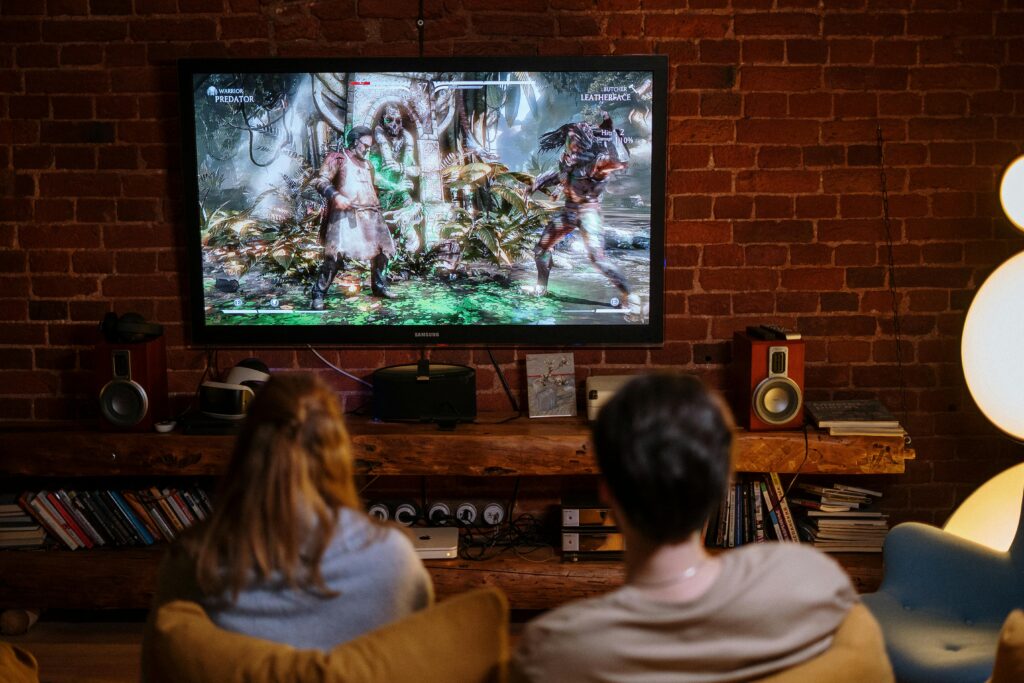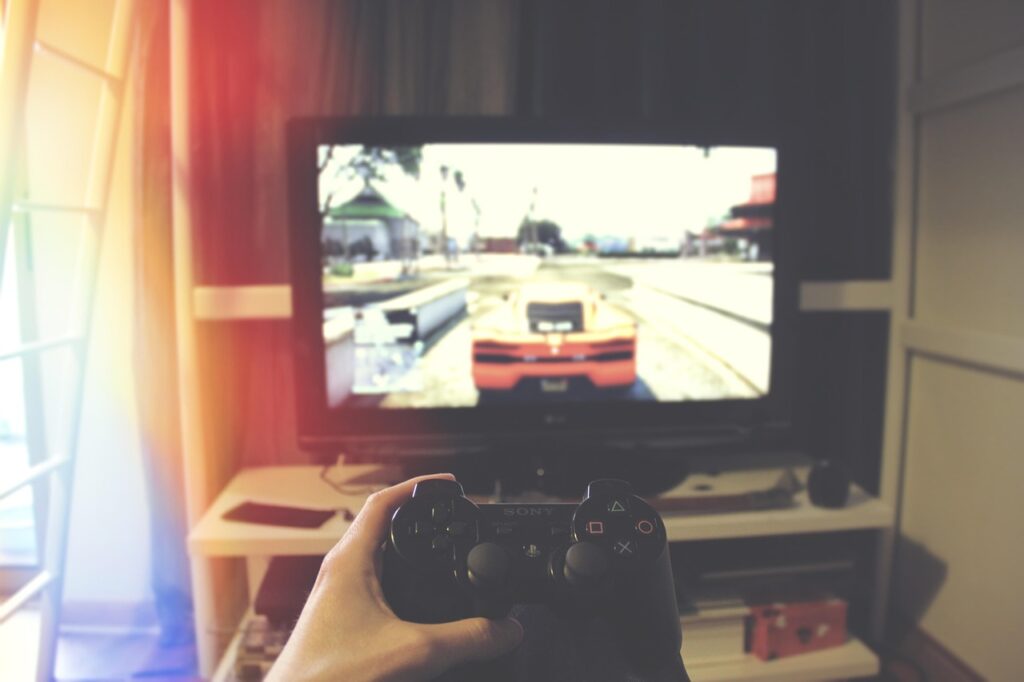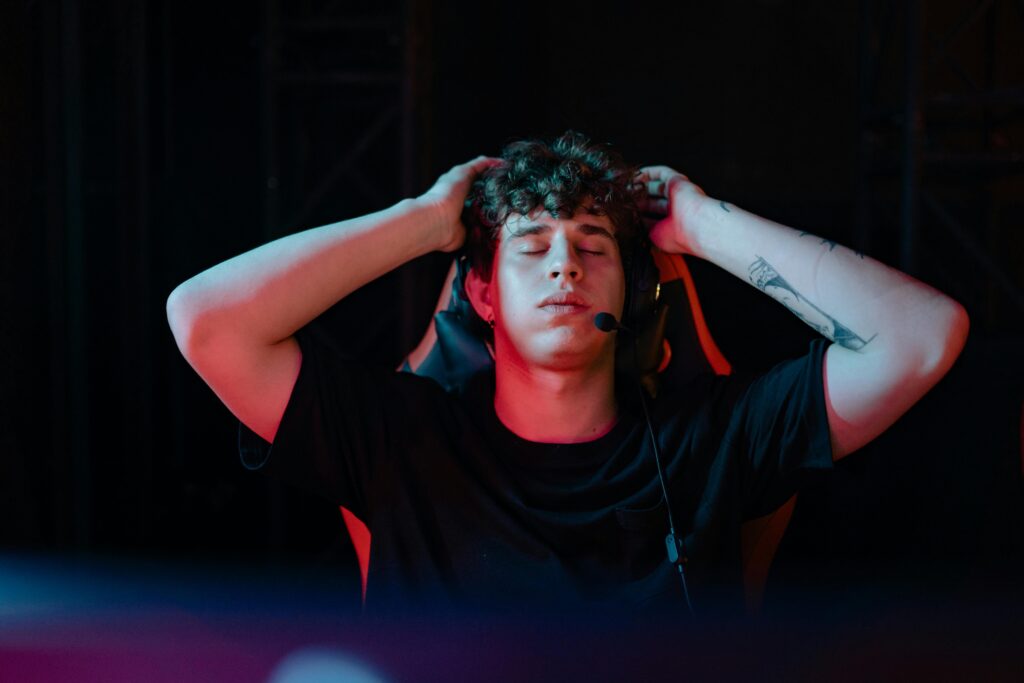Introduction
If you’ve ever sat through a marathon gaming session—eyes glued to the screen, heart pounding during a clutch play—you know the thrill of victory and the sting of defeat in equal measure. Mindfulness for gamers offers a way to heighten focus, improve reaction times, and reduce gaming-related fatigue.
Yet, paradoxically, mindfulness for gamers can sometimes feel like a pause that breaks your flow or “grind” momentum. In this post, we’ll explore both the empowering and challenging sides of bringing mindfulness into your gaming routine. You’ll find practical, bite-sized techniques, real-life player stories, 4–6 deep-dive subheadings, a Q&A section, FAQs, and a friendly closing to help you game smarter and feel better—without losing the competitive edge that drew you to gaming in the first place.
1. Why Mindfulness for Gamers Matters

Gaming isn’t just about button mashing or hours of aim training; it’s a mentally demanding activity that stresses your attention, emotions, and even posture. Mindfulness for gamers means paying nonjudgmental attention to what’s happening in and around you—your thoughts (“Did I just miss that headshot?”), your feelings (frustration, excitement), and your body (tense shoulders, rapid breathing). By noticing these signals early, you can recalibrate before tilt sets in or fatigue ruins your performance.
2. The Upside: Enhanced Focus and Resilience

- Sharper Concentration: Brief mindful breathing between matches can reset your attention, so you’re not carrying the last loss into the next game.
- Example: Pro streamer Alex “Tidal” paused for three conscious breaths after each round of his FPS scrims. He reports a 15% rise in his kill-to-death ratio and fewer rage quits.
- Faster Recovery: A quick body scan after a tense boss fight reduces muscle tension and eye strain, allowing longer, healthier sessions.
- Emotional Balance: Labeling frustration (“angry,” “bored,” “anxious”) without judging it helps you detach and choose whether to keep playing or to take a longer break.
3. The Downside: When Mindfulness Interrupts the Grind
Despite its benefits, mindfulness for gamers can sometimes…
- Disrupt Flow State: Pausing to focus on your breath or body can yank you out of the immersive “zone” you worked so hard to enter.
- Add Guilt: When you’re on a winning streak, the idea of interrupting momentum can feel counterproductive—“I can’t pause now!”
- Spotlight Fatigue: Heightened bodily awareness may make you notice aches and pains you’d otherwise ignore, triggering anxiety about your health.
4. Practical Mindfulness Techniques for Gamers

4.1 The “Respawn Breath” (30 Seconds)
Between matches or loading screens, close your eyes and take three slow breaths—inhale for four counts, exhale for four counts. Feel your chest expand and contract. This mini-reset clears residual frustration and prepares your mind for the next round.
4.2 Micro Body Scan at the Controller
When you pick up your controller or mouse, spend a moment noticing tension in your hands, wrists, shoulders, and back. Gently roll your shoulders, release your jaw, and wiggle your fingers. This subtle scan combats repetitive-strain buildup and keeps your reflexes sharp.
4.3 Sensory Anchor During Loading Screens
As the map loads, focus on one sensory detail: the hum of your PC fans, the texture of your mousepad, or the taste of a sip of water. Grounding yourself in the present environment prevents mind-wandering to negative thoughts like “I can’t believe I died again.”
4.4 Mindful Stretch Breaks Every Hour
Set a gentle timer for 60 minutes. When it dings, pause gameplay, stand up, stretch your arms overhead, roll your neck, and take three deep breaths. This routine reduces eye strain and physical stiffness, boosting long-term gaming endurance.
4.5 Visualization Warm-Up Before Tournaments
Before a tournament match or ranked climb session, close your eyes for one minute and visualize successful plays: accurate shots, smooth combos, efficient rotations. Combine this with steady breathing to prime your mind-body connection for peak performance.
You can know more about tips and techniques of mindful gaming by mindful.org
5. Embedding Mindfulness in Gaming Culture
- Anchor to Rituals: Tie micro-practices to natural game events—“After each death, I’ll take a Respawn Breath.”
- Use Visual Cues: Place a small sticker on your monitor’s bottom bezel that simply reads “Breathe.”
- Buddy Accountability: Gaming with friends? Encourage each other to practice one mindful tip per session. Share wins and challenges in voice chat.
6. Real-Life Story: From Tilt to Triumph
Jordan was known among his friends for explosive rage during losing streaks—he’d slam controllers, shout at teammates, and sometimes quit mid-game. After learning about mindfulness for gamers, he tried the Respawn Breath. The first time he paused, he thought, This is silly. But after a week, he noticed he was less reactive, won more consistently, and even found the gaming experience more enjoyable—tilt had given way to flow.
Q&A Section
- Q: Won’t pausing reduce my reaction time?
A: Micro-practices (30 seconds or less) won’t harm reaction speed; they actually enhance it by clearing mental clutter and reducing stress. - Q: Can I use mindfulness during live streams?
A: Yes—viewers appreciate authenticity. A quick mention—“BRB, breathe break”—models healthy behavior and gives you a moment to reset. - Q: What if mindfulness makes me notice discomfort I’d rather ignore?
A: Acknowledge the sensation without judgment—“I notice tight shoulders”—then decide whether to stretch or continue. Awareness empowers choice. - Q: How often should I practice these techniques?
A: Aim for micro-practices every 30–60 minutes or natural breaks in gameplay. Consistency matters more than duration. - Q: Can mindfulness help with gaming addiction?
A: It can increase self-awareness, making it easier to recognize unhealthy patterns and consciously decide when to stop playing.
FAQ Section
- Do I need special apps?
No—micro-practices can be self-guided. Apps help beginners but aren’t required. - How long until I notice benefits?
Some clarity appears immediately; sustained performance gains often show within two weeks of consistent practice. - Will mindfulness slow down my progression?
On the contrary—better focus and reduced tilt usually accelerate improvement over time. - Can I share these techniques with my esports team?
Absolutely—team-based mindfulness rituals boost cohesion, reduce stress, and improve collective performance. - Is it weird to “meditate” while gaming?
Not at all—mindfulness for gamers is pragmatic, tailored to in-game moments, and enhances rather than detracts from the experience.
Friendly Closing Message
Gaming is more than a hobby—it’s a mental sport requiring precision, focus, and resilience. Mindfulness for gamers equips you with simple, bite-sized practices to stay calm under pressure, recover quickly from setbacks, and play at your best. Whether you’re grinding solo queue, streaming for an audience, or competing in tournaments, weave micro-practices into your routine and notice how each mindful moment becomes a power-up for both your performance and well-being. Game on—mindfully!

Pingback: Mindfulness for Bloggers: How It Sparks Creativity (Yet Sometimes Hampers Your Publishing Rhythm) - Calm Within Minutes
Pingback: Mindfulness for Sales Professionals: How It Drives Your Success (But Sometimes Undermines Your Hustle) - Calm Within Minutes
Pingback: Mindfulness for Football Players: 5 Core Mindfulness Techniques for Footballers - Calm Within Minutes